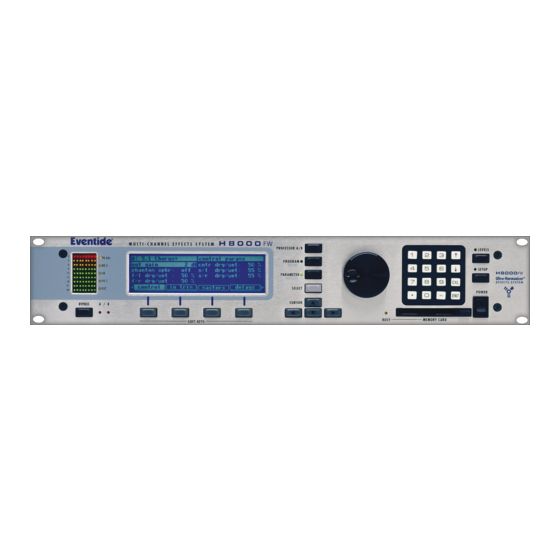
Table of Contents
Advertisement
Quick Links
Programming Manual for
H8000, H7600, Orville and
the DSP7000 families of
®
Harmonizer
Brand Effects
Processors.
( covering H8000/H8000A/H8000FW, H7600, Orville™, DSP7000/7500™
and DSP4000B+™ )
Part No: 141035
Manual Release 1.3
19 August, 2008
©1999-2008 Eventide Inc., One Alsan Way, Little Ferry, NJ, 07643 USA
Harmonizer is a registered trademark of Eventide Inc. for its audio special effects devices incorporating pitch shift.
H8000, H8000A, H8000FW, H7600, Orville, DSP7000, DSP7500, DSP4000B+and Ultrashifter are trademarks of Eventide
Inc.
Advertisement
Table of Contents













Need help?
Do you have a question about the harmonizer H8000 and is the answer not in the manual?
Questions and answers